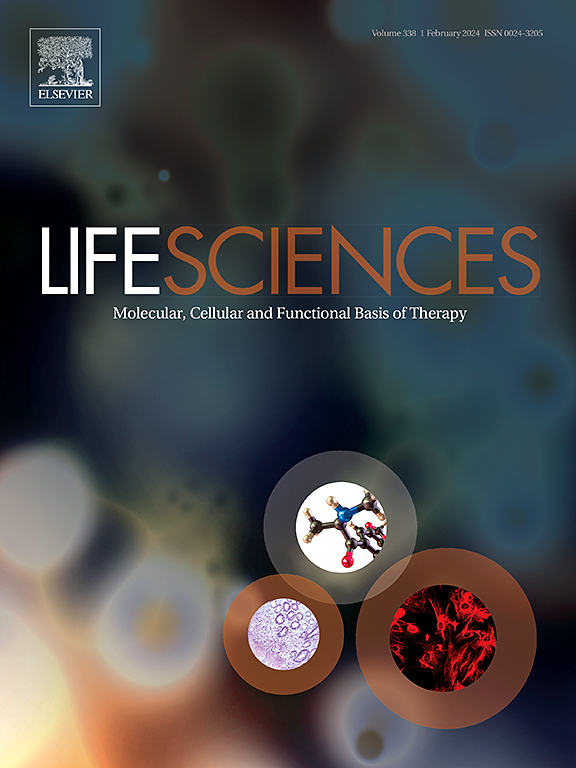Targeting FOXP3 in glioblastoma: Blockade of tumor intrinsic effects boosts response to chemo-radiotherapy
IF 5.1
2区 医学
Q1 MEDICINE, RESEARCH & EXPERIMENTAL
引用次数: 0
Abstract
Glioblastoma (GBM) is the most common malignant primary brain tumor in adults. Although this disease carries a dismal prognosis due to its highly invasive nature and resistance to therapy, no significant therapeutic advances have emerged in the last 20 years. The transcription factor Forkhead box protein P3 (FOXP3), known for its central role in the immunosuppressive activity of regulatory T cells (Tregs), has also been detected in tumor cells, including GBM cells. However, the intrinsic role of FOXP3 in GBM cells is poorly understood. Thus, we aimed to evaluate the effect of FOXP3 blockade in GBM. Meta-analysis of transcriptomic data indicated that FOXP3, which expression was higher in GBM biopsies than in normal brain, was associated with worse prognosis and chemo-resistance. It also correlated with the expression of markers of immune-suppression and epithelial-mesenchymal transition. Expression of FOXP3 in GBM cell lines and patient-derived cultures was upregulated by chemo- and radiotherapy, and its blockade using a cell penetrating peptide (P60) inhibited GBM cell migration, induced cytotoxicity and enhanced radio- and chemo-sensitivity. To improve the local availability of P60, we developed an adenoviral vector (Ad.P60) that enhanced the apoptotic response of GBM cells and reduced chemoresistance. Local treatment with Ad.P60 in mice bearing intracranial GBM reduced Treg infiltration, inhibited tumor growth and improved chemosensitivity to cisplatin, leading to long-term survival with combined chemo-gene therapy without generating neurotoxicity. Our results suggest that FOXP3 emerges as a dual-function molecule that could improve GBM response to standard treatment.
在胶质母细胞瘤中靶向FOXP3:阻断肿瘤内在效应提高对化疗的反应
胶质母细胞瘤(GBM)是成人最常见的恶性原发性脑肿瘤。尽管这种疾病由于其高度侵袭性和对治疗的耐药性而预后不佳,但在过去的20年里,没有出现显著的治疗进展。转录因子叉头盒蛋白P3 (FOXP3)在调节性T细胞(Tregs)的免疫抑制活性中起着核心作用,也在肿瘤细胞(包括GBM细胞)中被检测到。然而,FOXP3在GBM细胞中的内在作用尚不清楚。因此,我们的目的是评估FOXP3阻断在GBM中的作用。转录组学数据的荟萃分析显示,FOXP3在GBM活检组织中的表达高于正常脑组织,与较差的预后和化疗耐药相关。它还与免疫抑制和上皮-间质转化标志物的表达有关。化疗和放疗可上调FOXP3在GBM细胞系和患者源培养物中的表达,使用细胞穿透肽(P60)阻断FOXP3可抑制GBM细胞迁移,诱导细胞毒性并增强放射和化疗敏感性。为了提高P60的局部可用性,我们开发了一种腺病毒载体(Ad.P60),该载体增强了GBM细胞的凋亡反应并降低了化疗耐药。局部用Ad治疗。颅内GBM小鼠的P60减少Treg浸润,抑制肿瘤生长,改善对顺铂的化疗敏感性,使化疗-基因联合治疗的长期生存不产生神经毒性。我们的研究结果表明FOXP3作为一种双重功能分子出现,可以改善GBM对标准治疗的反应。
本文章由计算机程序翻译,如有差异,请以英文原文为准。
求助全文
约1分钟内获得全文
求助全文
来源期刊

Life sciences
医学-药学
CiteScore
12.20
自引率
1.60%
发文量
841
审稿时长
6 months
期刊介绍:
Life Sciences is an international journal publishing articles that emphasize the molecular, cellular, and functional basis of therapy. The journal emphasizes the understanding of mechanism that is relevant to all aspects of human disease and translation to patients. All articles are rigorously reviewed.
The Journal favors publication of full-length papers where modern scientific technologies are used to explain molecular, cellular and physiological mechanisms. Articles that merely report observations are rarely accepted. Recommendations from the Declaration of Helsinki or NIH guidelines for care and use of laboratory animals must be adhered to. Articles should be written at a level accessible to readers who are non-specialists in the topic of the article themselves, but who are interested in the research. The Journal welcomes reviews on topics of wide interest to investigators in the life sciences. We particularly encourage submission of brief, focused reviews containing high-quality artwork and require the use of mechanistic summary diagrams.
 求助内容:
求助内容: 应助结果提醒方式:
应助结果提醒方式:


